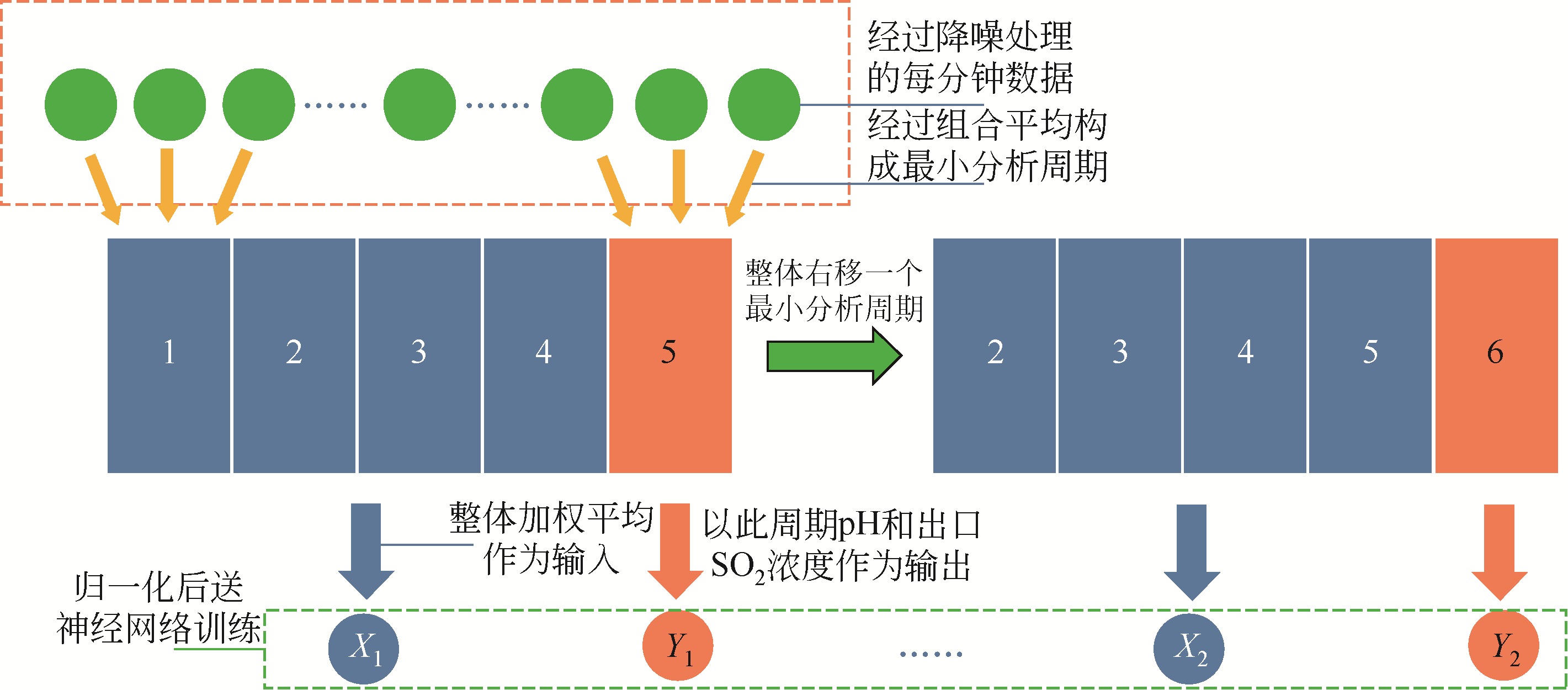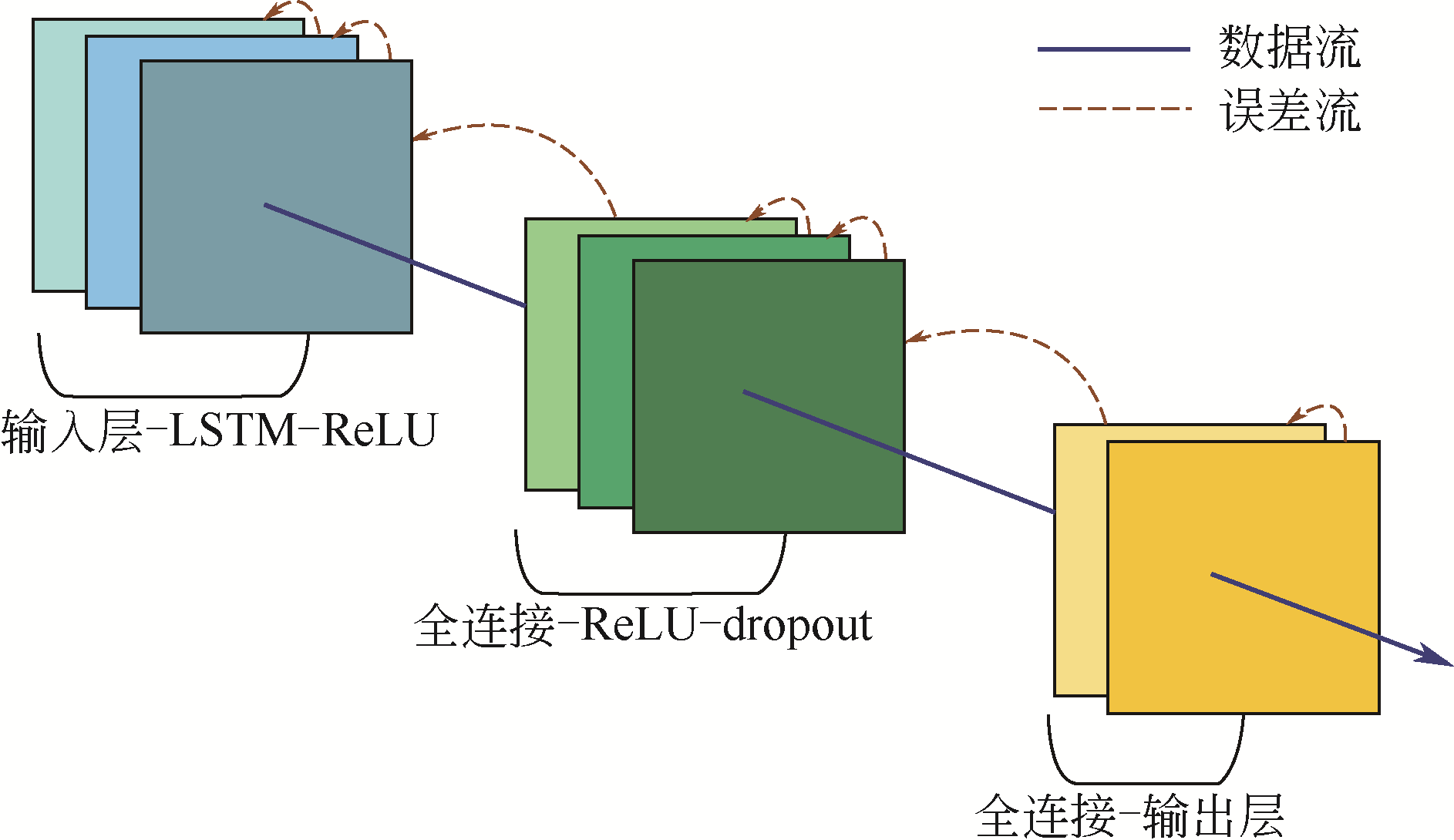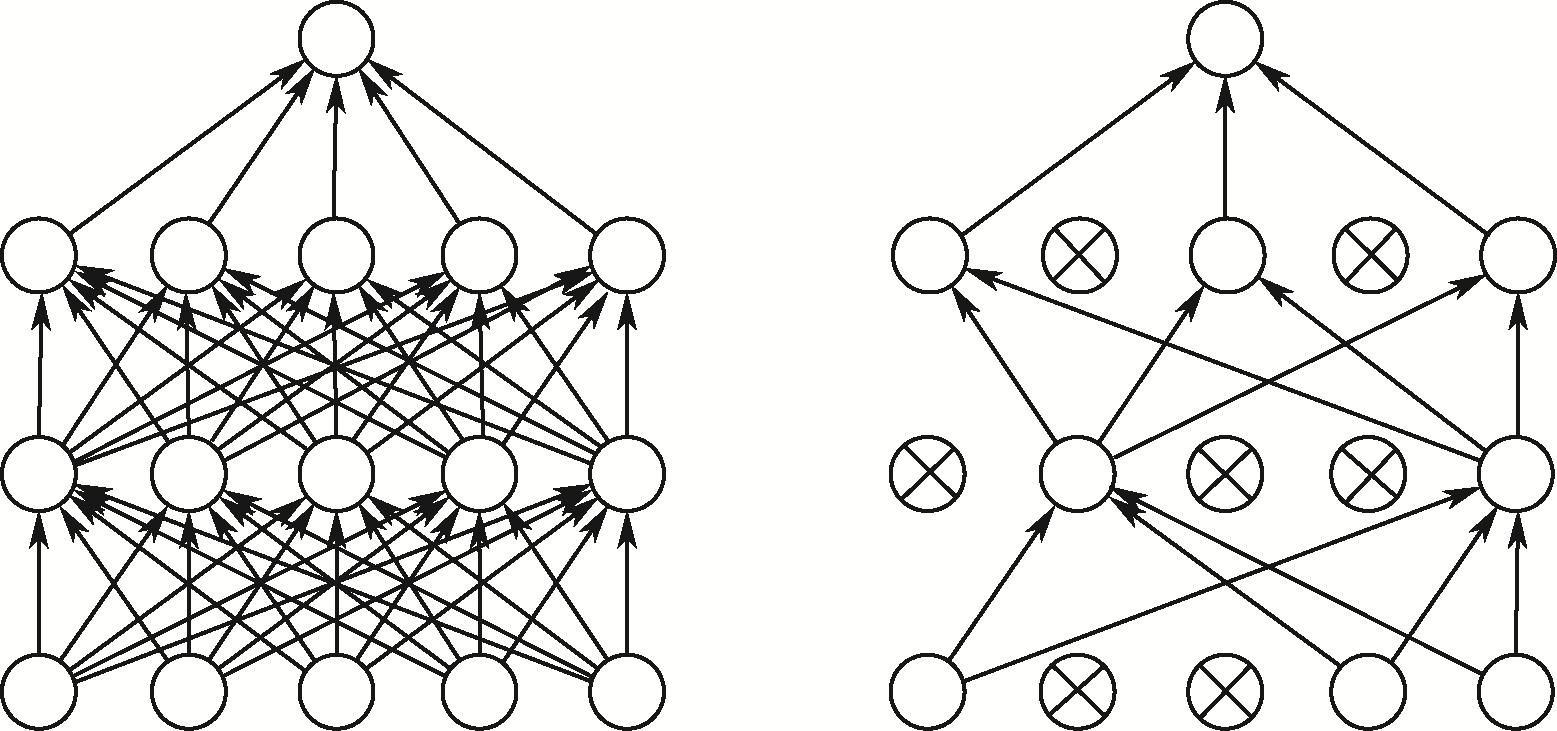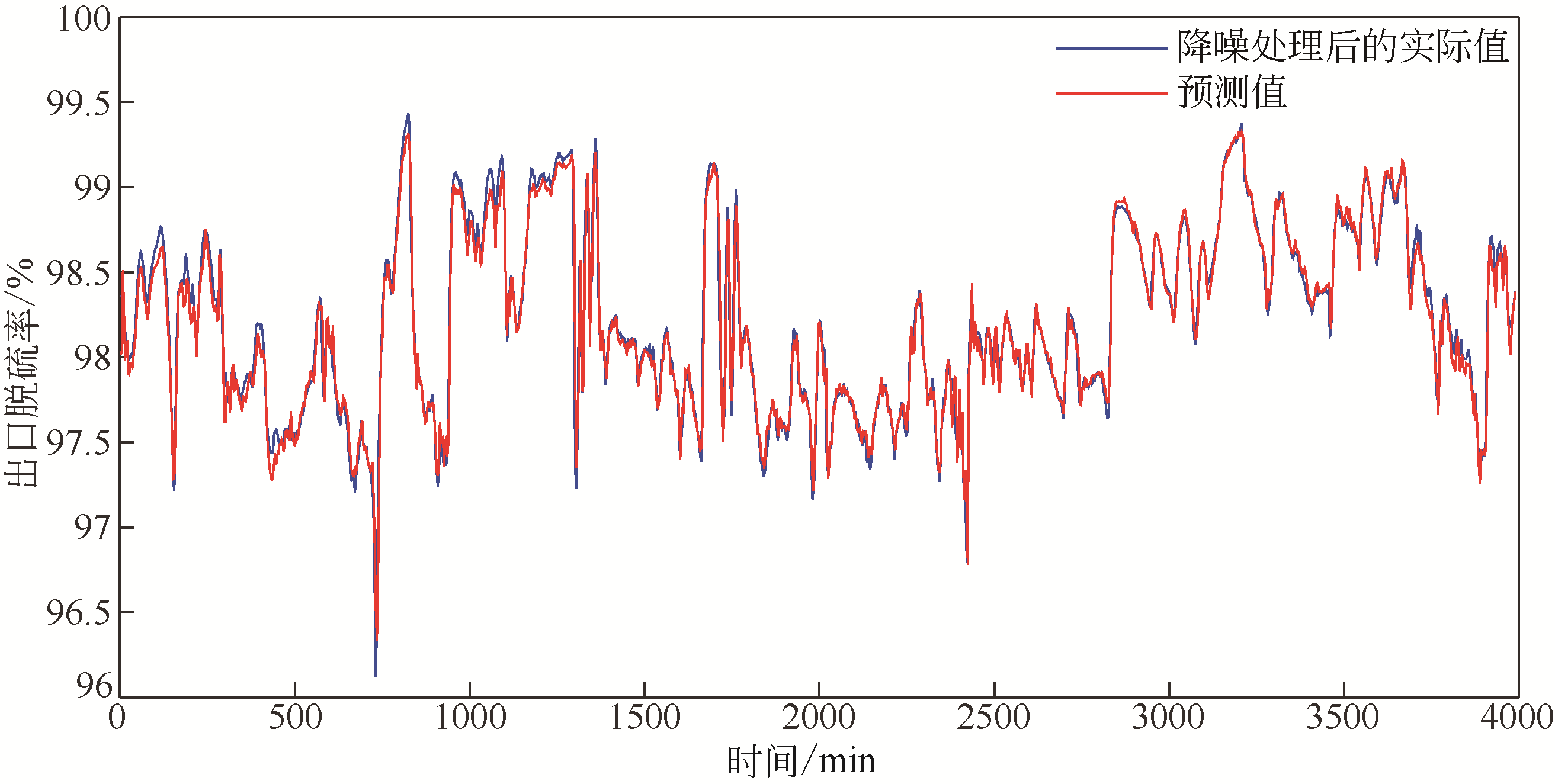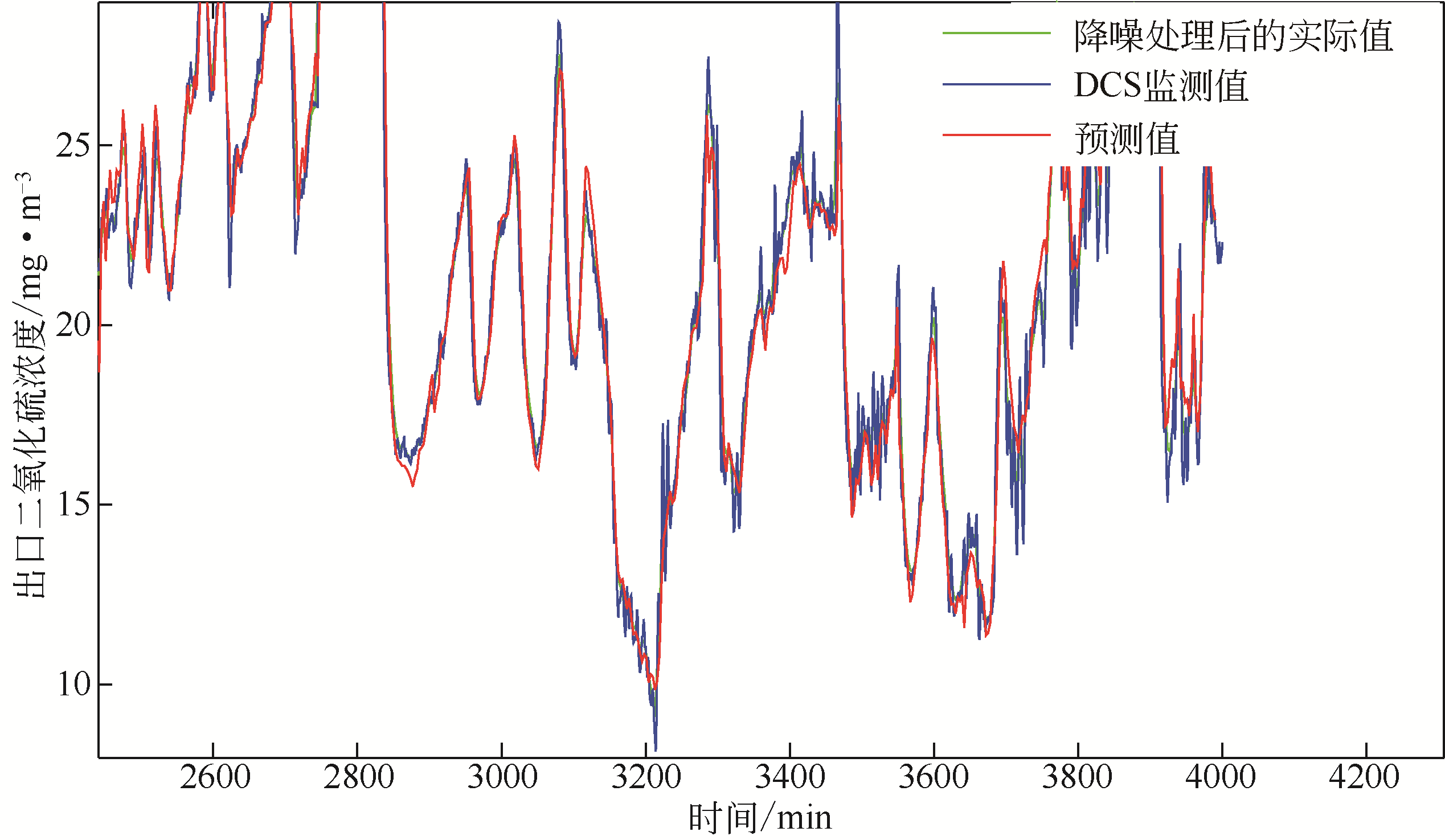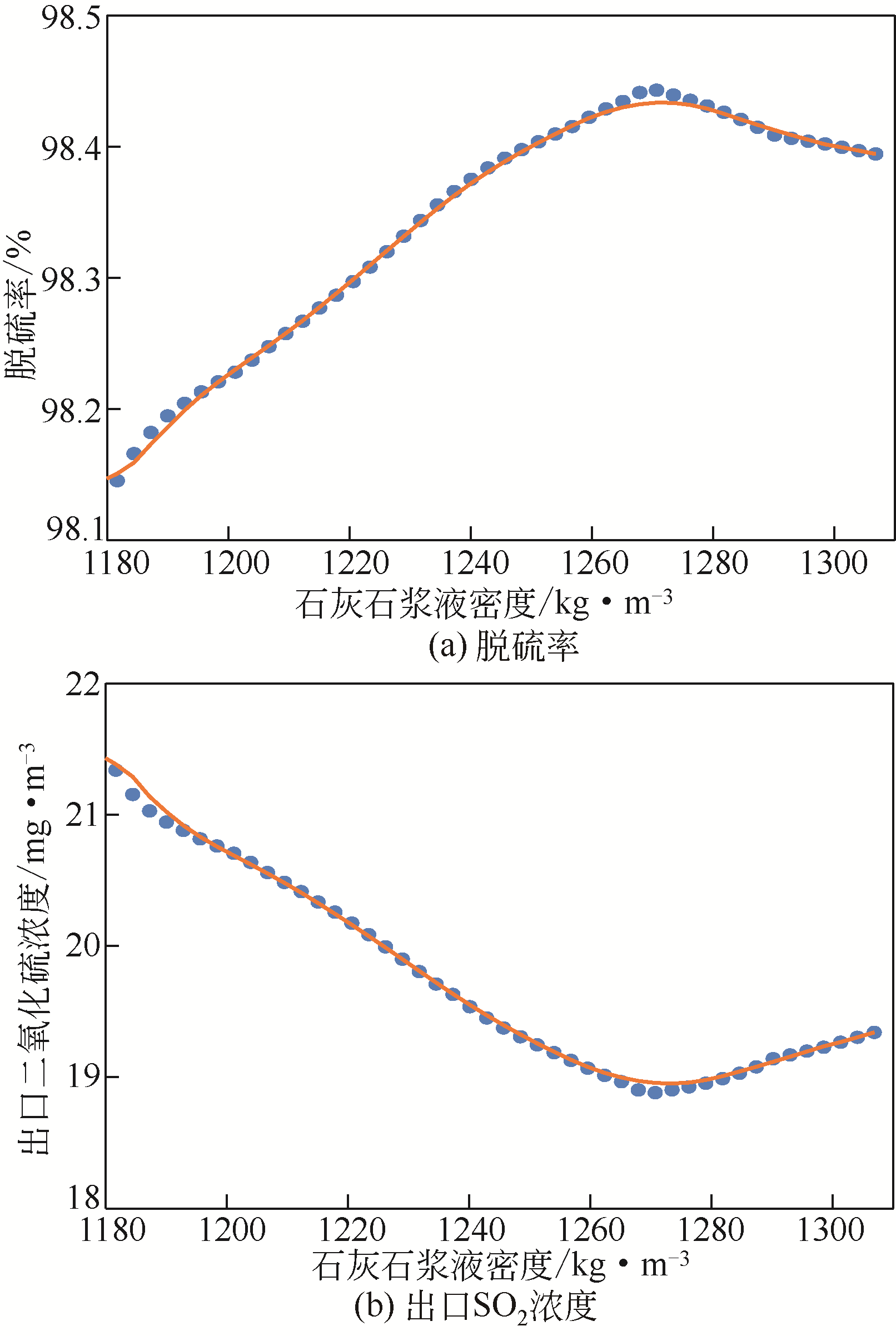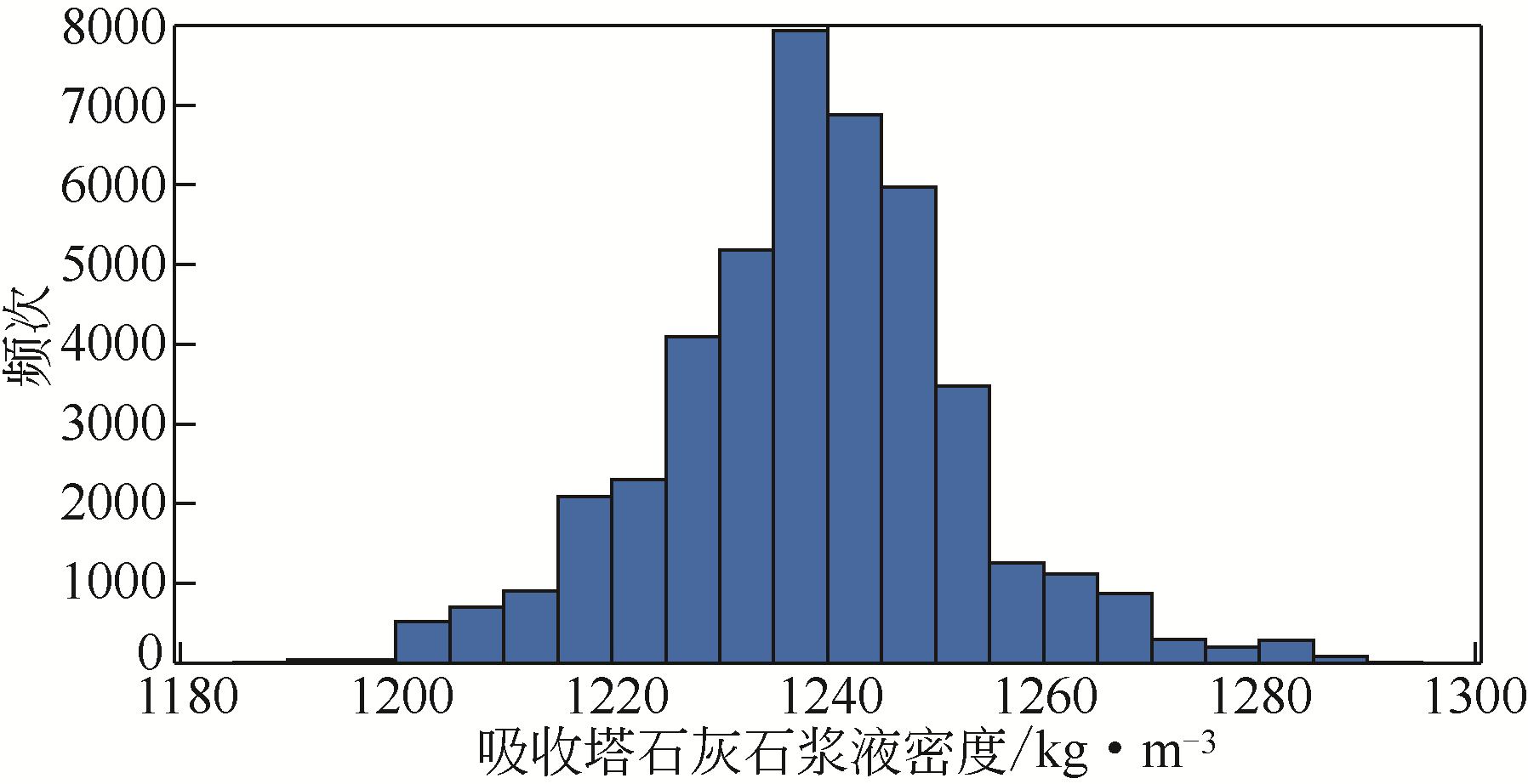Chemical Industry and Engineering Progress ›› 2021, Vol. 40 ›› Issue (3): 1689-1698.DOI: 10.16085/j.issn.1000-6613.2020-0751
• Resources and environmental engineering • Previous Articles Next Articles
Prediction model of FGD system based on deep neural network and its application
MA Shuangchen1( ), LIN Chenyu1, ZHOU Quan1, WU Zhongsheng2, LIU Qi1, CHEN Wentong2, FAN Shuaijun1, YAO Yakun2, MA Caini1
), LIN Chenyu1, ZHOU Quan1, WU Zhongsheng2, LIU Qi1, CHEN Wentong2, FAN Shuaijun1, YAO Yakun2, MA Caini1
- 1.Department of Environmental Science and Engineering, North China Electric Power University (Baoding), Baoding 071003, Hebei, China
2.Shenzhen Energy Baoding Power Co. , Ltd. , Baoding 072150, Hebei, China
-
Received:2020-05-06Online:2021-03-17Published:2021-03-05 -
Contact:MA Shuangchen
基于深度神经网络的脱硫系统预测模型及应用
马双忱1( ), 林宸雨1, 周权1, 吴忠胜2, 刘琦1, 陈文通2, 樊帅军1, 要亚坤2, 马采妮1
), 林宸雨1, 周权1, 吴忠胜2, 刘琦1, 陈文通2, 樊帅军1, 要亚坤2, 马采妮1
- 1.华北电力大学(保定)环境科学与工程系,河北 保定 071003
2.深能保定发电有限公司,河北 保定 072150
-
通讯作者:马双忱 -
作者简介:马双忱(1968—),男,博士,教授,研究方向为燃煤电厂烟气脱硫脱硝、废水处理等。E-mail:msc1225@163.com 。
CLC Number:
Cite this article
MA Shuangchen, LIN Chenyu, ZHOU Quan, WU Zhongsheng, LIU Qi, CHEN Wentong, FAN Shuaijun, YAO Yakun, MA Caini. Prediction model of FGD system based on deep neural network and its application[J]. Chemical Industry and Engineering Progress, 2021, 40(3): 1689-1698.
马双忱, 林宸雨, 周权, 吴忠胜, 刘琦, 陈文通, 樊帅军, 要亚坤, 马采妮. 基于深度神经网络的脱硫系统预测模型及应用[J]. 化工进展, 2021, 40(3): 1689-1698.
share this article
Add to citation manager EndNote|Ris|BibTeX
URL: https://hgjz.cip.com.cn/EN/10.16085/j.issn.1000-6613.2020-0751
| 分析指标 | 波动范围 | 分析指标 | 波动范围 |
|---|---|---|---|
| 浆液pH | 4.5~8.5 | 入口SO2浓度/mg·m-3 | 800~1700 |
| 入口烟气流量/m3·h-1 | 6×105~1.2×106 | 出口SO2浓度/mg·m-3 | 0~50 |
| 入口烟气粉尘含量/mg·m-3 | 30~70 | 入口烟气氧含量/% | 4.94~7.03 |
| 石灰石供浆密度/kg·m-3 | 1180~1300 | 浆液密度/kg·m-3 | 1100~1150 |
| 浆液液位/m | 9~10 | 循环泵开启数量/台 | 1~4 |
| 石灰石供浆流量/m3·h-1 | 0~25 | 石膏排出泵开启数量/台 | 0~2 |
| 入口烟温/℃ | 90~110 | 氧化风机流量(湿)/m3·h-1 | 5500~5700 |
| 分析指标 | 波动范围 | 分析指标 | 波动范围 |
|---|---|---|---|
| 浆液pH | 4.5~8.5 | 入口SO2浓度/mg·m-3 | 800~1700 |
| 入口烟气流量/m3·h-1 | 6×105~1.2×106 | 出口SO2浓度/mg·m-3 | 0~50 |
| 入口烟气粉尘含量/mg·m-3 | 30~70 | 入口烟气氧含量/% | 4.94~7.03 |
| 石灰石供浆密度/kg·m-3 | 1180~1300 | 浆液密度/kg·m-3 | 1100~1150 |
| 浆液液位/m | 9~10 | 循环泵开启数量/台 | 1~4 |
| 石灰石供浆流量/m3·h-1 | 0~25 | 石膏排出泵开启数量/台 | 0~2 |
| 入口烟温/℃ | 90~110 | 氧化风机流量(湿)/m3·h-1 | 5500~5700 |
| 预测指标 | 均方根误差 | 平均百分误差/% | 误差方差 |
|---|---|---|---|
| pH | 0.0955 | 0.9726 | 0.0091 |
| 出口SO2浓度 | 1.0778 | 3.6599 | 1.1551 |
| 脱硫率 | 0.0903 | 0.0630 | 0.0081 |
| 预测指标 | 均方根误差 | 平均百分误差/% | 误差方差 |
|---|---|---|---|
| pH | 0.0955 | 0.9726 | 0.0091 |
| 出口SO2浓度 | 1.0778 | 3.6599 | 1.1551 |
| 脱硫率 | 0.0903 | 0.0630 | 0.0081 |
| 1 | 孙智滨. 大型燃煤火电机组湿法脱硫系统建模与控制研究[D].上海:上海电力大学, 2019. |
| SUN Zhibin. Modeling and control of wet desulfurization system for large coal-fired power plants[D]. Shanghai: Shanghai University of Electric Power, 2019. | |
| 2 | 陈尔鲁. 湿法烟气脱硫过程建模与优化[D]. 杭州:浙江大学, 2016. |
| CHEN Erlu. Modeling and optimization of wet flue gas desulfurization process[D]. Hangzhou: Zhejiang University, 2016. | |
| 3 | 张想. 湿法烟气脱硫吸收塔理论建模[D]. 保定:华北电力大学, 2018. |
| ZHANG Xiang. Theoretical modeling of wet flue gas desulfurization absorption tower[D]. Baoding: North China Electric Power University, 2018. | |
| 4 | 马双忱, 周权, 曹建宗, 等.湿法脱硫系统动态过程建模与仿真[J].化工学报, 2020, 71(8): 3741-3751. |
| MA Shuangchen, ZHOU Quan, CAO Jianzong, et al. Modeling and simulation of wet flue gas desulfurization process[J]. CIESC Journal, 2020, 71(8): 3741-3751. | |
| 5 | 石旻昊. 烟气脱硫过程净烟二氧化硫含量的动态仿真软件的研发[D]. 沈阳:东北大学, 2017. |
| SHI Minhao. Development of dynamic simulation software for net sulfur dioxide content in flue gas desulfurization process[D]. Shenyang: Northeastern University, 2017. | |
| 6 | 曹建宗, 林宸雨, 陈文通, 等. 现代预测和优化算法在脱硫系统运行中的应用[J]. 华电技术, 2020, 42(3): 67-71. |
| CAO Jianzong, LIN Chenyu, CHEN Wentong, et al. Application of modern prediction and optimization algorithms in FGD systems[J]. Huadian Technology, 2020, 42(3): 67-71. | |
| 7 | KRZYWANSKI J, CZAKIERT T, BLASZCZUK A, et al. A generalized model of SO2 emissions from large-and small-scale CFB boilers by artificial neural network approach[J]. Fuel Processing Technology, 2015, 137: 66-74. |
| 8 | 程换新, 于沙家.面向脱硫系统的BP神经网络预测控制[J]. 石油化工自动化, 2015, 51(5): 39-42. |
| CHENG Huanxin, YU Shajia. BP neural network predictive control for desulfurization system[J]. Automation in Petro-Chemical Industry,2015, 51(5): 39-42. | |
| 9 | 孙焰峰. 基于物料平衡的FGD系统性能监测与优化分析[D]. 南京: 东南大学, 2018. |
| SUN Yanfeng. Performance monitoring and optimization analysis of FGD system based on material balance[D]. Nanjing: Southeast University, 2018. | |
| 10 | GUO Y, XU Z, ZHENG C, et al. Modeling and optimization of wet flue gas desulfurization system based on a hybrid modeling method[J]. Journal of the Air & Waste Management Association, 2019, 69(5): 565-575. |
| 11 | 苏翔鹏, 刁永发, 杨青杰.基于RBF神经网络的双碱法脱硫塔SO2排放量预测方法[J]. 热力发电, 2017, 46(10): 58-63. |
| SU Xiangpeng, DIAO Yongfa, YANG Qingjie. Prediction of SO2 emission from dual-alkali desulfurization tower based on RBF[J]. Thermal Power Generation, 2017, 46(10): 58-63. | |
| 12 | 苏翔鹏. 基于RBF神经网络的双碱法脱硫塔SO2排放量预测与优化研究[D]. 上海: 东华大学, 2017. |
| SU Xiangpeng. Prediction and optimization of SO2 emissions from double alkali desulfurization tower based on RBF neural network[D]. Shanghai: Donghua University, 2017. | |
| 13 | 李军红, 刘锁清, 董森, 等. 广义回归神经网络对脱硫效率的预测[J]. 自动化技术与应用, 2018, 37(10): 1-3, 37. |
| LI Junhong, LIU Suoqing, DONG Sen, et al. Prediction of desulfurization efficiency based on generalized regression neural network[J]. Techniques of Automation and Applications, 2018, 37(10): 1-3, 37. | |
| 14 | FU J, XIAO H, WANG T, et al. Prediction model of desulfurization efficiency of coal-fired power plants based on LSTM neural network[C]//Proceedings of the 2019 International Conference on Internet of Things (iThings) and IEEE Green Computing and Communications (GreenCom) and IEEE Cyber, Physical and Social Computing (CPSCom) and IEEE Smart Data (SmartData), Atlanta, USA, 2019. |
| 15 | 张然然. 电厂SO2排放软测量研究[D]. 济南: 齐鲁工业大学, 2019. |
| ZHANG Ranran. Research on soft sensing of SO2 emission in a power plant[D]. Ji’nan: Qilu University of Technology, 2019. | |
| 16 | PASCANU R, MIKOLOV T, BENGIO Y. On the difficulty of training recurrent neural networks[C]//International Conference on International Conference on Machine Learning. JMLR.org, 2013. |
| 17 | HOCHREITER S, SCHMIDHUBER J. Long Short-term memory[J]. Neural Computation, 1997, 9(8): 1735-1780. |
| 18 | ALEX Graves. Supervised sequence labelling with recurrent neural networks[M]. Berlin: Springer, 2012. |
| 19 | 杨国田, 张涛, 王英男, 等. 基于长短期记忆神经网络的火电厂NOx排放预测模型[J]. 热力发电, 2018, 47(10): 12-17. |
| YANG Guotian, ZHANG Tao, WANG Yingnan, et al. Prediction model for NOx emissions from thermal power plants based on long-short-term memory neural network[J]. Thermal Power Generation, 2018, 47(10): 12-17. | |
| 20 | 张涛. 一种基于长短期记忆神经网络的火电厂NOx排放量预测方法[D]. 北京: 华北电力大学, 2019. |
| ZHANG Tao. NOx emission modeling for power plant boiler based on LSTM[D]. Beijing: North China Electric Power University, 2019. | |
| 21 | 张嘉, 黄景涛, 茅建波. 基于LSTM的电站锅炉NOx 排放浓度建模研究[J]. 计算机与应用化学, 2018, 35(11): 903-909. |
| ZHANG Jia, HUANG Jingtao, MAO Jianbo. NOx emission modeling for power plant boiler based on LSTM[J]. Computers and Applied Chemistry, 2018, 35(11): 903-909. | |
| 22 | 陈川, 陈冬林, 何李凯. 基于BPNN-EMD-LSTM组合模型的城市短期燃气负荷预测[J]. 安全与环境工程, 2019, 26(1): 153-158, 173. |
| CHEN Chuan, CHEN Donglin, HE Likai. Short-term forecast of urban natural gas load base on BPNN-EMF-LSTM combined model[J]. Safety and Environmental Engineering, 2019, 26(1): 153-158, 173. | |
| 23 | 勾玄, 肖先勇. 基于经验模式分解与LSTM神经网络的短期电价预测模型[J]. 西安理工大学学报, 2020, 36(1): 129-134. |
| GOU Xuan, XIAO Xianyong. Short-term electricity price forecasting model based on empirical mode decomposition and LSTM neural network[J]. Journal of Xi’an University of Technology, 2020, 36(1): 129-134. | |
| 24 | 陈卓,孙龙祥.基于深度学习LSTM网络的短期电力负荷预测方法[J]. 电子技术, 2018, 47(1): 39-41. |
| CHEN Zhuo, SUN Longxiang. Short-term electrical load forecasting based on deep learning LSTM networks[J]. Electronic Technology, 2018, 47(1): 39-41. | |
| 25 | GLOROT X, BORDES A, BENGIO Y. Deep sparse rectifier neural networks[C]//Proceedings of the 14th International Conference on Artificial Intelligence and Statistics (AISTATS), 2010. |
| 26 | DIEDERIK Kingma, JIMMY Ba. Adam: a method for stochastic optimization[C]//ICLR 2015, SanDiego, 2015. |
| 27 | SRIVASTAVA N, HINTON G, KRIZHEVSKY A, et al. Dropout: a simple way to prevent neural networks from overfitting[J]. The Journal of Machine Learning Research, 2014, 15(1): 1929-1958. |
| 28 | 潘海斌, 陈志峰, 王荣. 600MW机组湿法脱硫系统浆液失效的原因分析及解决措施[J]. 电力科技与环保, 2020(1): 34-36. |
| PAN Haibin, CHEN Zhifeng, WANG Rong. Cause analysis and solving measures of slurry failure of 600MW unit wet desulfurization system[J].Electric Power Technology and Environmental Protection, 2020(1): 34-36. | |
| 29 | 宫源, 罗安安, 朱家骅, 等. 传质控制下宽分布石膏颗粒群溶解特性[J]. 化工学报, 2018, 69(10): 4177-4183. |
| GONG Yuan, LUO An’an, ZHU Jiahua, et al. Dissolution characteristics of widely distributed gypsum particles under mass transfer control[J]. CIESC Journal, 2018,69(10): 4177-4183. | |
| 30 | 潘丹萍, 郭彦鹏, 黄荣廷, 等. 石灰石-石膏法烟气脱硫过程中细颗粒物形成特性[J]. 化工学报, 2015, 66(11): 4618-4625. |
| PAN Danping, GUO Yanpeng, HUANG Rongtin, et al. Characteristics of fine particle formation in the process of limestone-gypsum flue gas desulfurization[J]. CIESC Journal, 2015, 66(11): 4618-4625. | |
| 31 | 王子宁, 周加贝, 朱家骅, 等. 二水硫酸钙溶解动力学[J]. 化工学报,2015, 66(3): 1001-1006. |
| WUANG Zining, ZHOU Jiabei, ZHU Jiahua, et al. Dissolution kinetics of calcium sulfate dihydrate[J]. CIESC Journal, 2015, 66(3): 1001-1006. |
| [1] | XU Chenyang, DU Jian, ZHANG Lei. Chemical reaction evaluation based on graph network [J]. Chemical Industry and Engineering Progress, 2023, 42(S1): 205-212. |
| [2] | LI Lanyu, HUANG Xinye, WANG Xiaonan, QIU Tong. Reflection and prospects on the intelligent transformation of chemical engineering research [J]. Chemical Industry and Engineering Progress, 2023, 42(7): 3325-3330. |
| [3] | YU Junnan, YU Jianfeng, CHENG Yang, QI Yibo, HUA Chunjian, JIANG Yi. Performance prediction of variable-width microfluidic concentration gradient chips by deep learning [J]. Chemical Industry and Engineering Progress, 2023, 42(7): 3383-3393. |
| [4] | WANG Junjie, PAN Yanqiu, NIU Yabin, YU Lu. Molecular level catalytic reforming model construction and application [J]. Chemical Industry and Engineering Progress, 2023, 42(7): 3404-3412. |
| [5] | WANG Shuo, ZHANG Yaxin, ZHU Botao. Prediction of erosion life of coal water slurry pipeline based on grey prediction model [J]. Chemical Industry and Engineering Progress, 2023, 42(7): 3431-3442. |
| [6] | CHEN Sen, YIN Pengyuan, YANG Zhenglu, MO Yiming, CUI Xili, SUO Xian, XING Huabin. Advances in the intelligent synthesis of functional solid materials [J]. Chemical Industry and Engineering Progress, 2023, 42(7): 3340-3348. |
| [7] | ZHAO Jingbin, WANG Yanfu, WANG Tao, MA Weikai, WANG Chen. Vulnerability assessment of storage tanks based on Monte Carlo simulation and dynamic event tree [J]. Chemical Industry and Engineering Progress, 2023, 42(5): 2751-2759. |
| [8] | ZHANG Jianwei, XU Rui, ZHANG Zhongchuang, DONG Xin, FENG Ying. Mixing characteristics of concentration field in impingement flow reactor based on convolutional neural network [J]. Chemical Industry and Engineering Progress, 2023, 42(2): 658-668. |
| [9] | ZENG Siying, YANG Minbo, FENG Xiao. Machine learning-based prediction of coalbed methane composition and real-time optimization of liquefaction process [J]. Chemical Industry and Engineering Progress, 2023, 42(10): 5059-5066. |
| [10] | WANG Lu, ZHANG Lei, DU Jian. High-throughput screening of zeolite materials for CO2/N2 selective adsorption separation by machine learning [J]. Chemical Industry and Engineering Progress, 2023, 42(1): 148-158. |
| [11] | PAN Yanqiu, LI Pengfei, GAO Shilei, YU Lu. Application of BP neural network based on MIC screening rules in modeling and product prediction of shift unit [J]. Chemical Industry and Engineering Progress, 2022, 41(S1): 36-43. |
| [12] | LI Wei, RUAN Chenglong, WANG Xiaoming, LI Yajie, LIANG Chenglong. Integrated modelling method for tank-batch finished gasoline blending formulations [J]. Chemical Industry and Engineering Progress, 2022, 41(9): 4701-4712. |
| [13] | FENG Ying, ZHAO Mengjie, CUI Qian, XIE Yuju, ZHANG Jianwei, DONG Xin. Research progress of molecular simulation technology in the development and application of chitosan functional materials [J]. Chemical Industry and Engineering Progress, 2022, 41(8): 4241-4253. |
| [14] | YANG Lei, SONG Jinling, TANG Chuyang, YU Shiyao, YANG Xinyu. Products prediction of carbon-based solid waste pyrolysis based on FUSION model [J]. Chemical Industry and Engineering Progress, 2022, 41(7): 3966-3973. |
| [15] | SUN Deyun, HU Yanhong, LIU Peng, TANG Mao, HU Ze, LIU Zhaogang, WU Jinxiu. Interaction mechanism of CTAB and Ce3+ in different cerium salt systems (nitrate, sulfate, chloride) [J]. Chemical Industry and Engineering Progress, 2022, 41(6): 3212-3220. |
| Viewed | ||||||
|
Full text |
|
|||||
|
Abstract |
|
|||||


